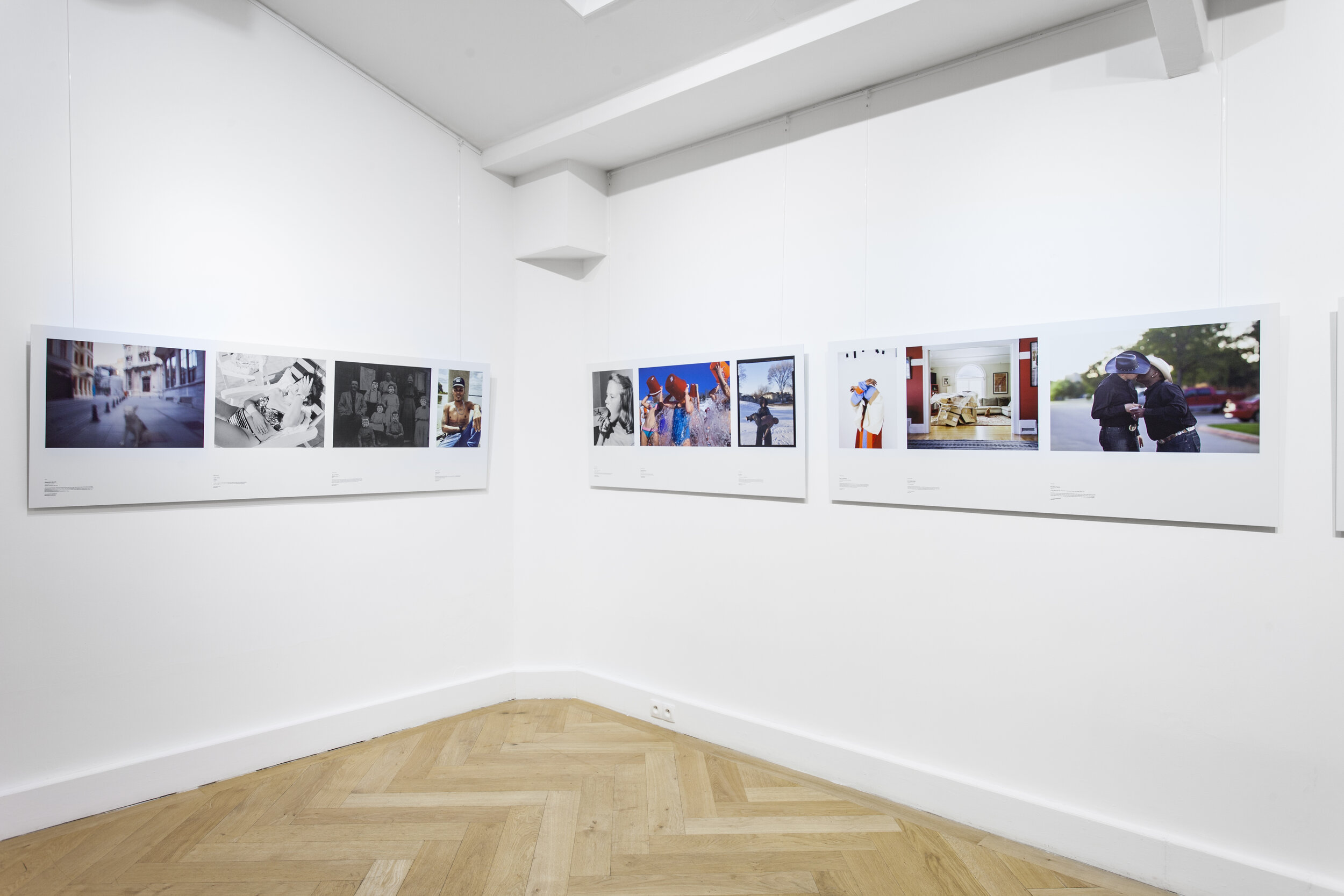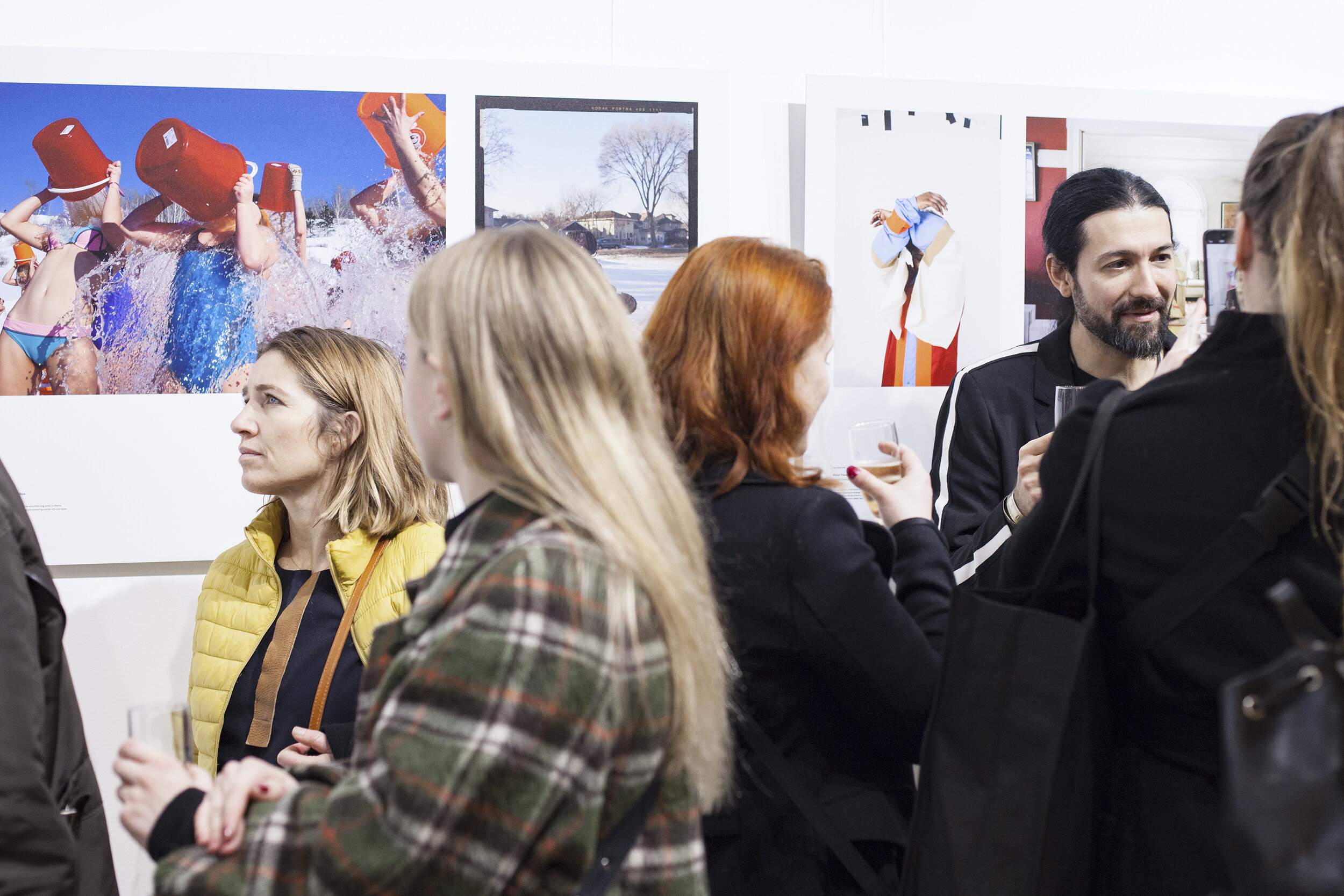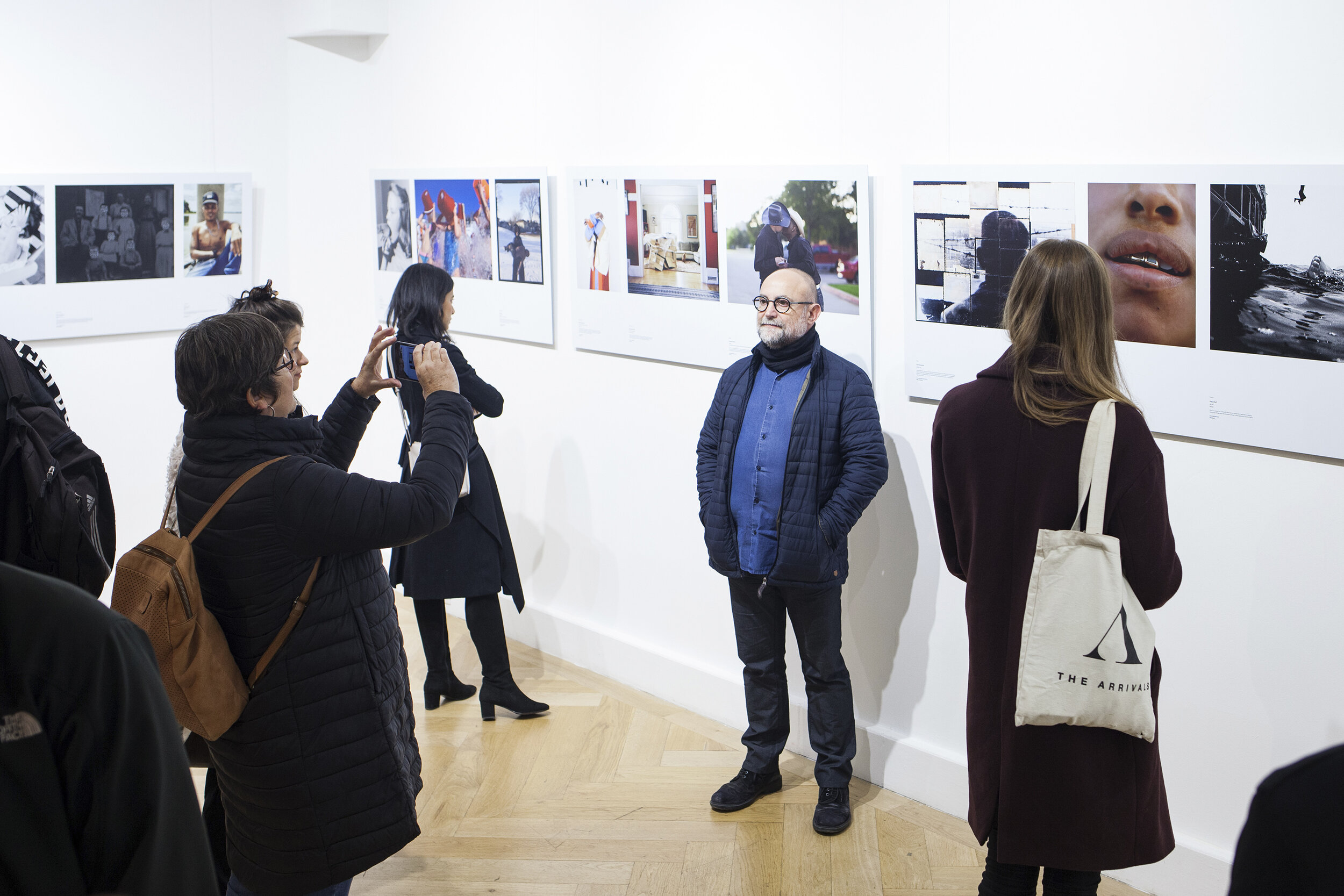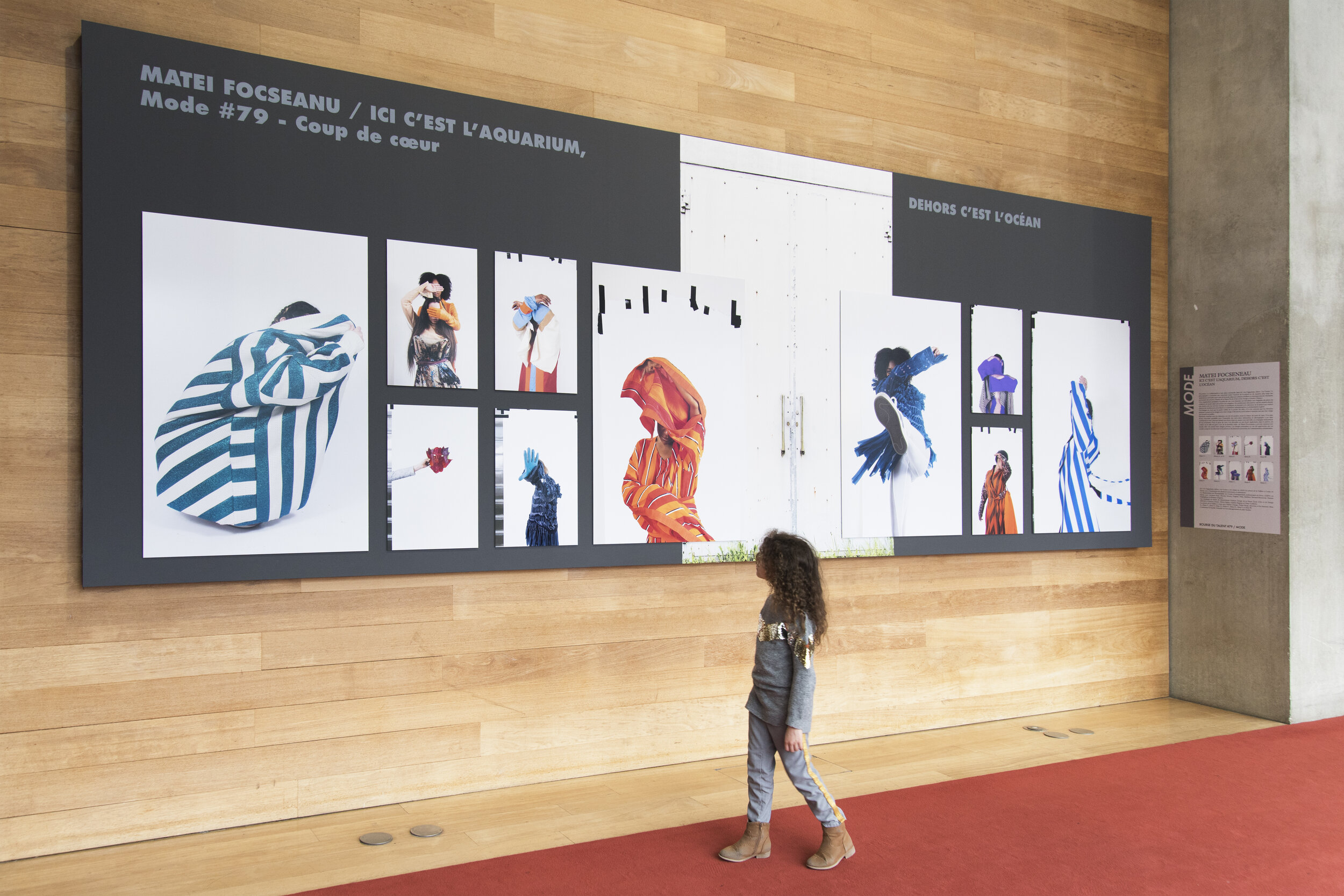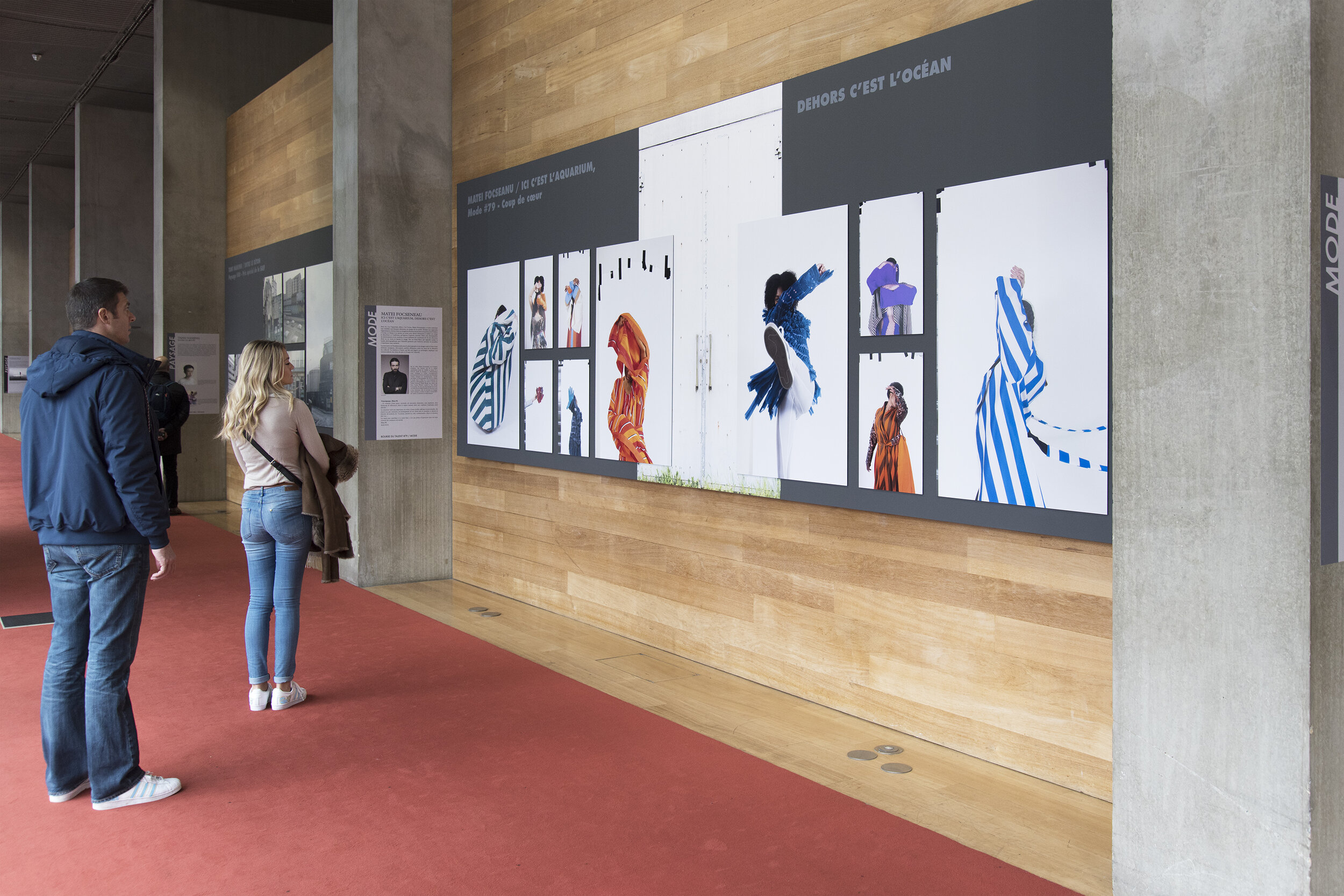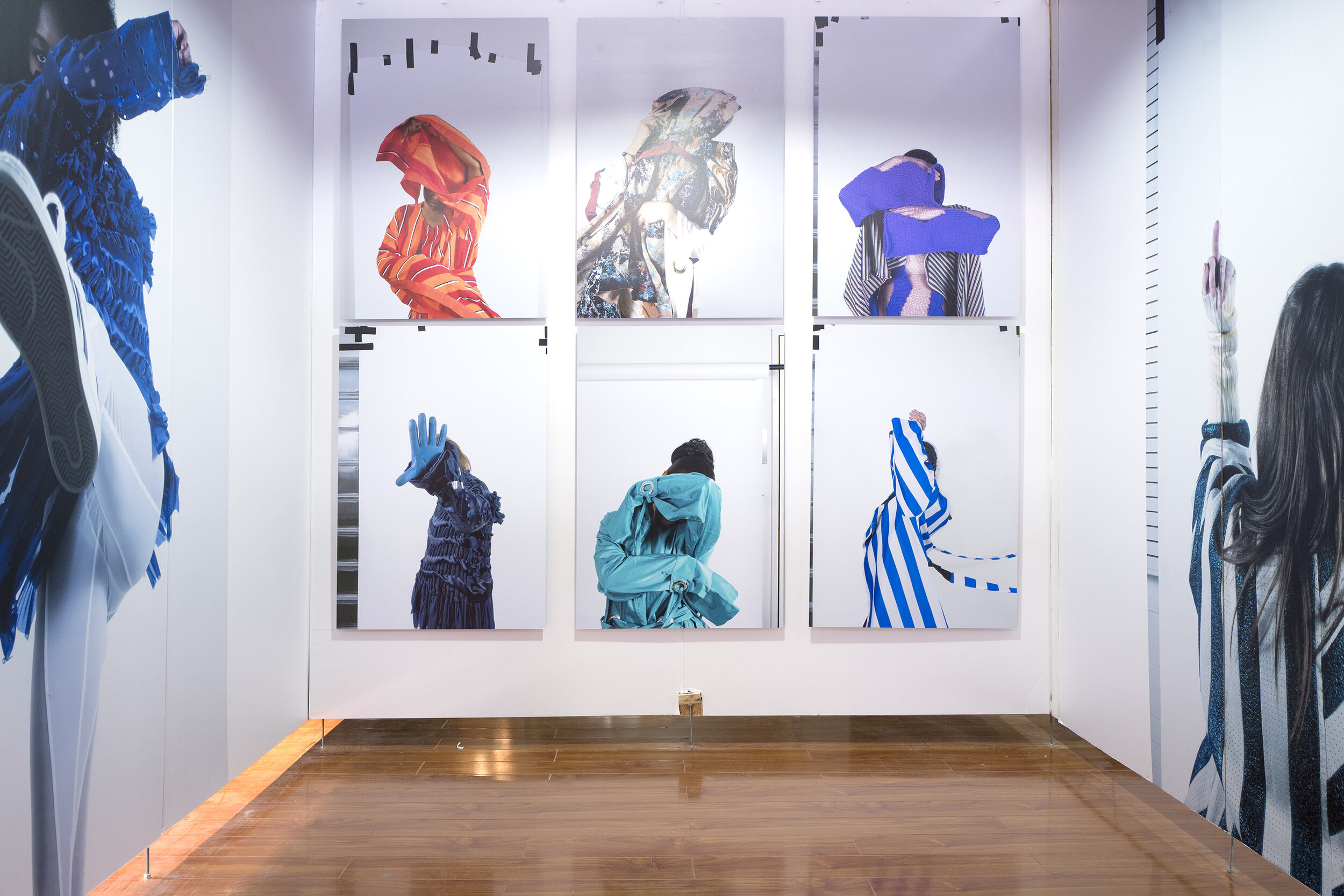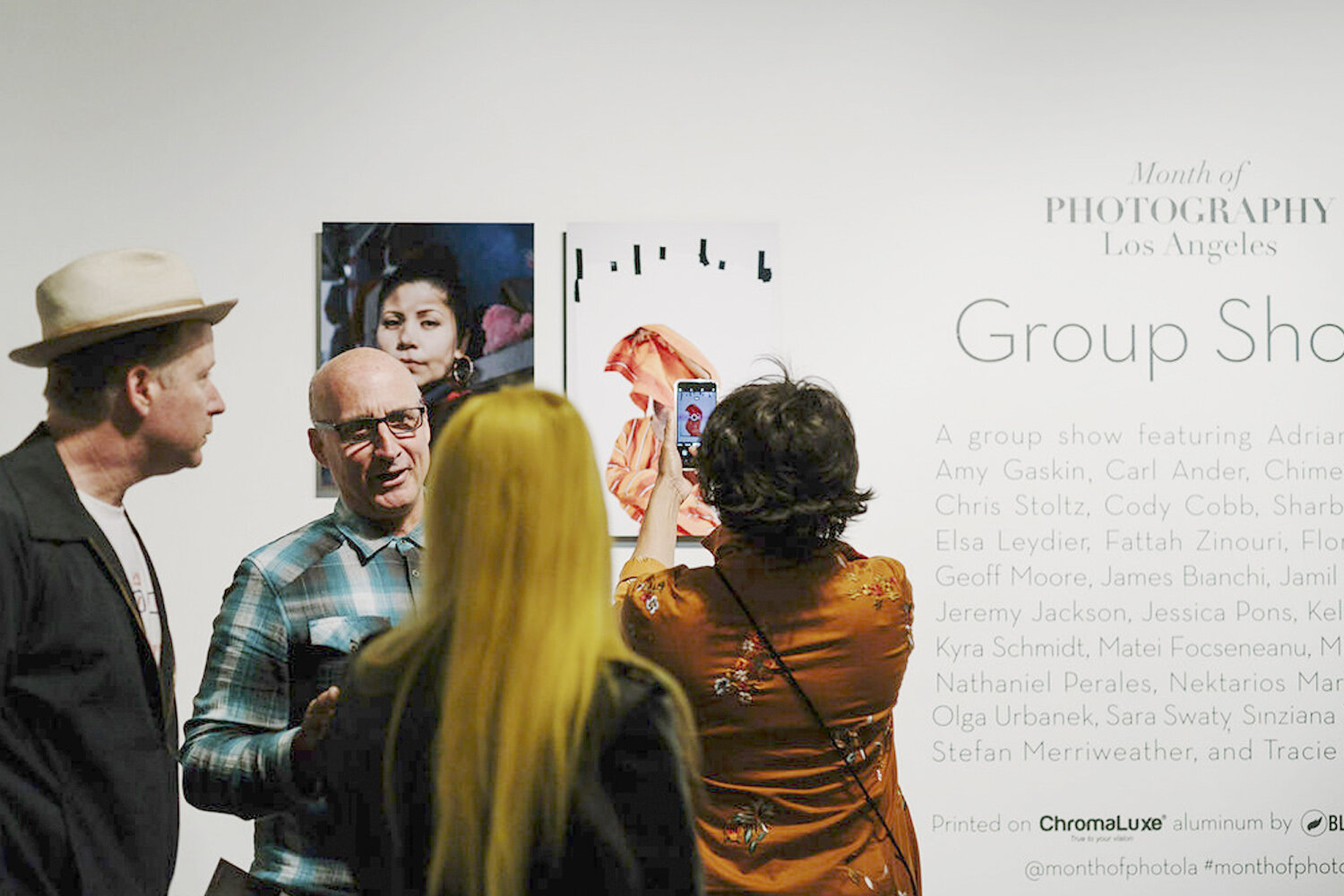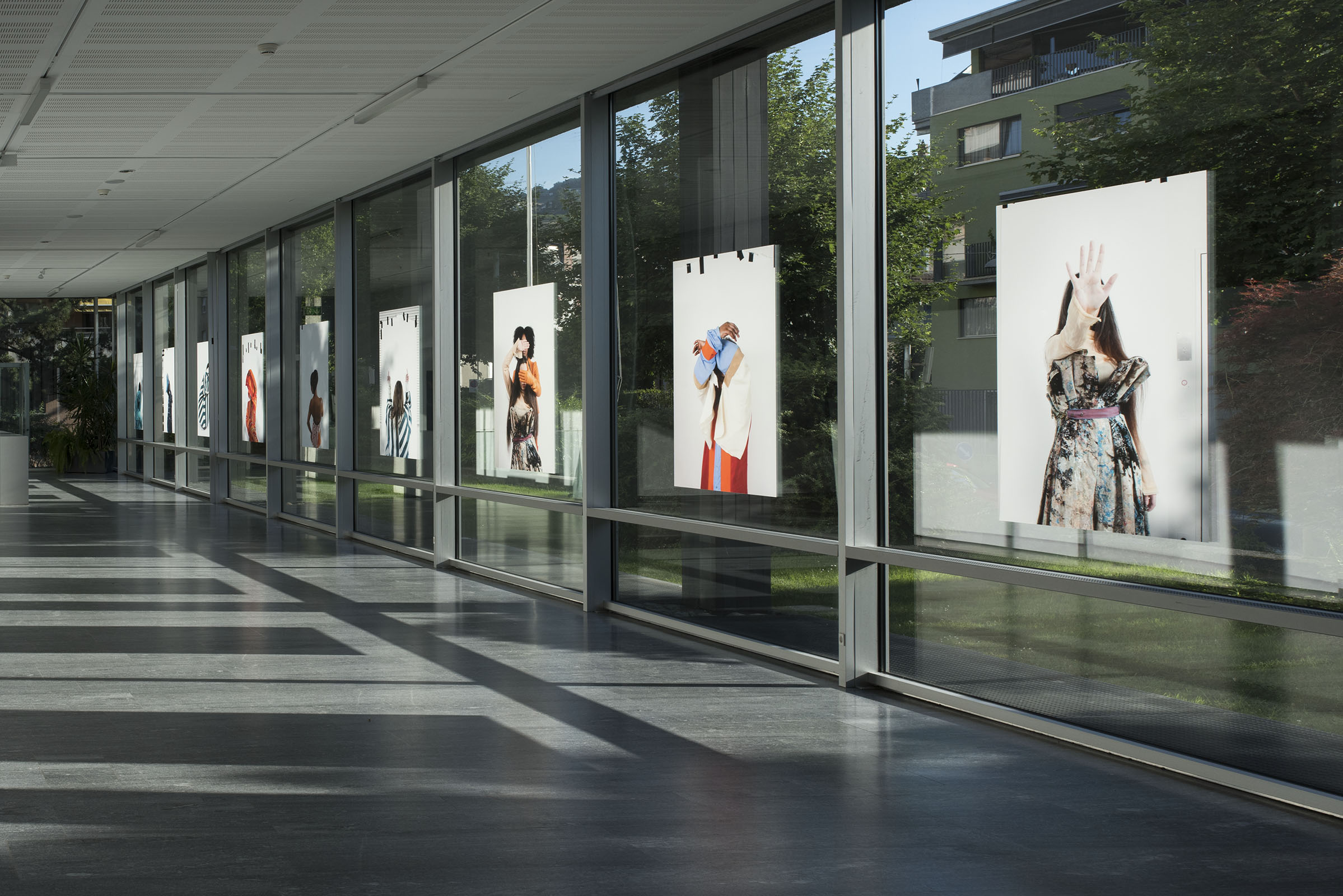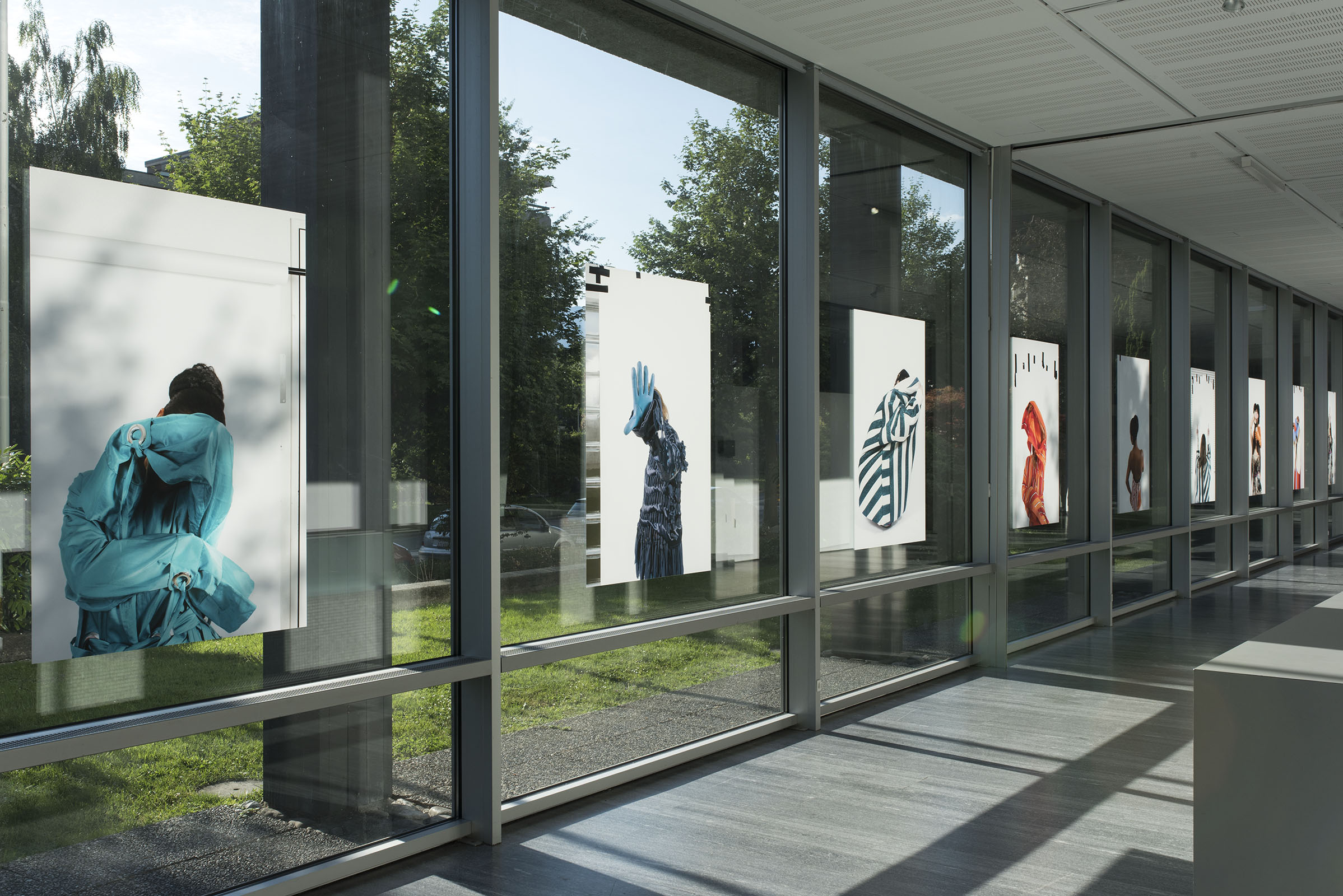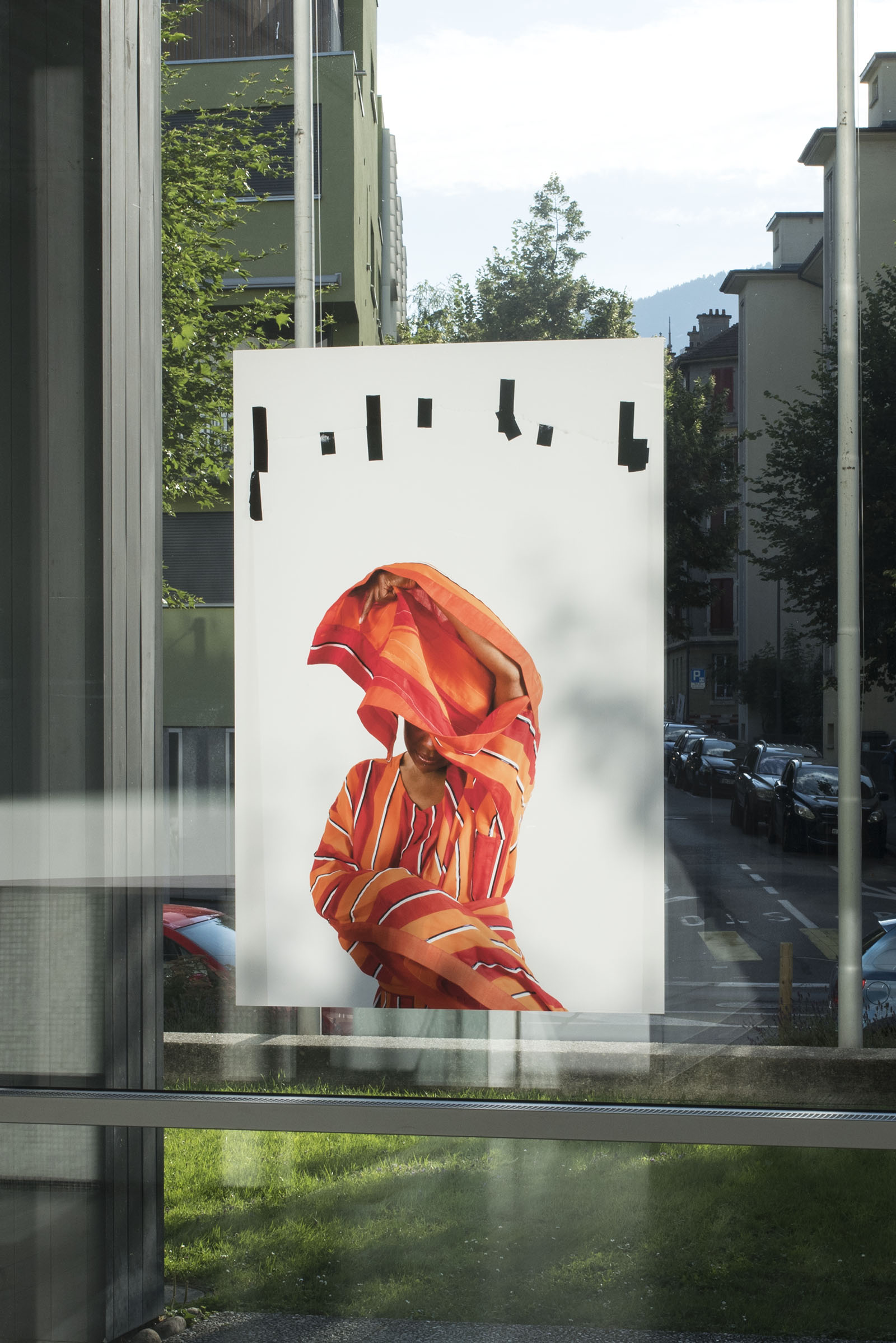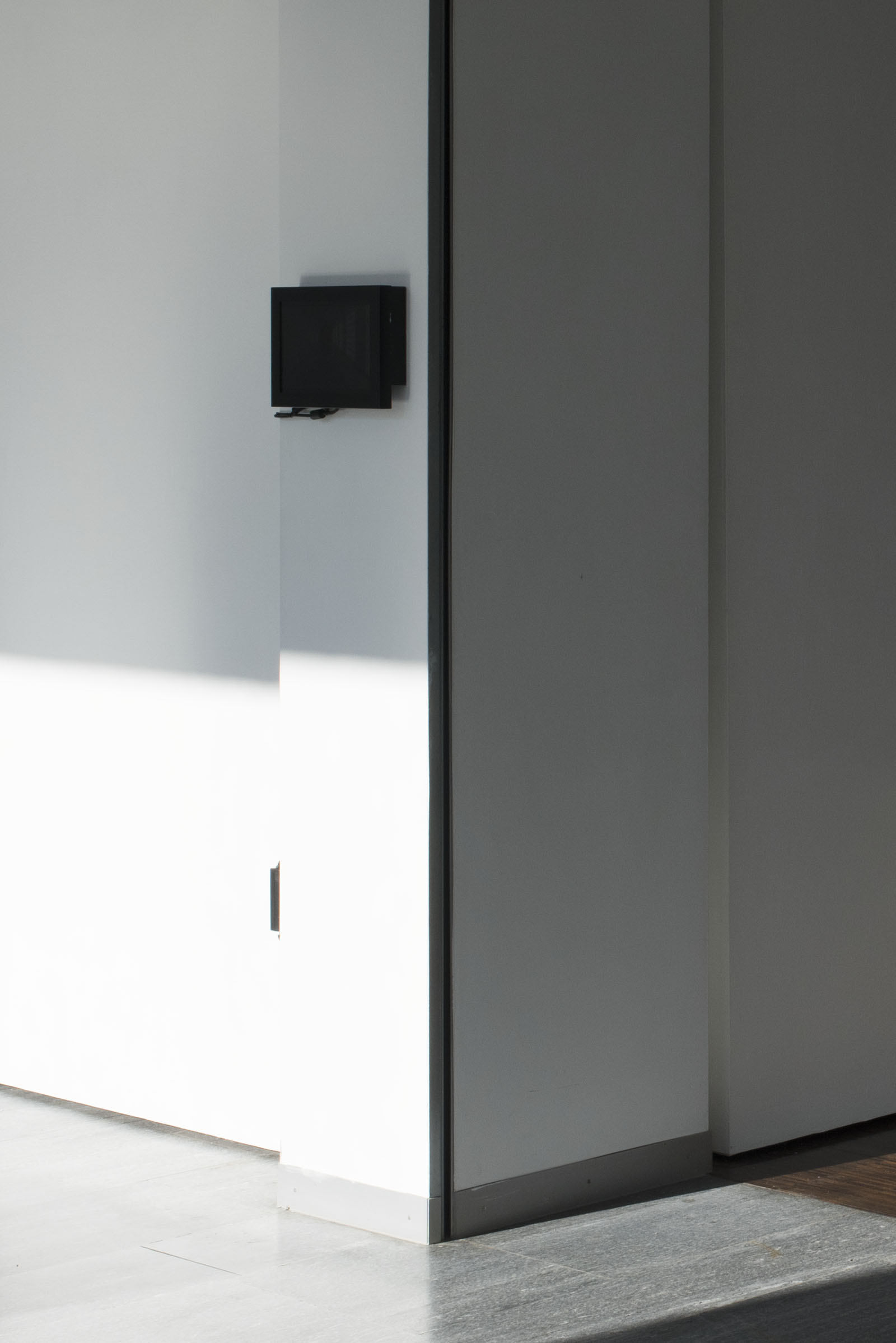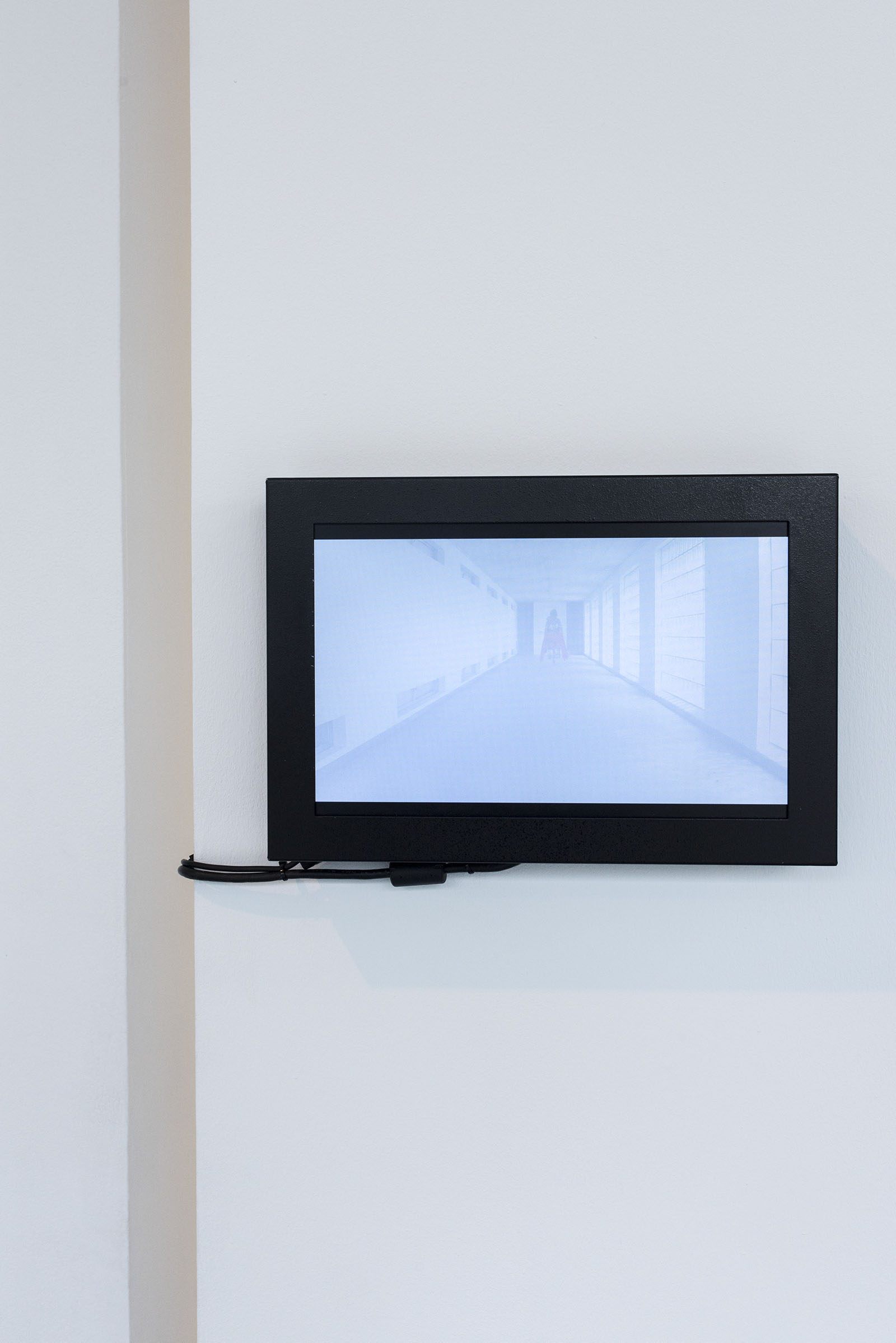« Ici c’est l’aquarium, dehors c’est l’océan »
This project has been my main scope during the first part of the year 2018, which was devoted to my diploma at CEPV school of photography, in Vevey (Switzerland).
EN
The need for freedom has led my family to flee Romanian communism. Today, this same need guides and feeds into my practice. It got me involved in border thinking and enticed me to explore the margins. In this project the margin is prison, more specifically one intended for women. A prison whose supposedly rehabilitative dimension is more than often eclipsed by the purely punitive side of incarceration. With its isolating aspect, incarceration slowly but surely undermines the image of the self and the social identity of the inmates.
I have always been fascinated by clothes not only for their aesthetic aspect but also for their implicit communicative capacity. The latter function has proved to be a privileged medium of communication between the inside and the outside of prison. Apparel in pictures establishes a language, a dialogue between the inmate who wears it on the one hand and the eye that looks at the images produced on the other. Apparel take on a significant role in this project especially that the Swiss law does not allow prisoners’ faces to be shown in pictures nor to be recognized.
I adopt the language of fashion photography; I use it in this particular context for self-image restoration. For this project, about fifteen outfits were made by three designers of the HEAD school in Geneva, who served as protagonists in the realization of these images. The overall goal is to use the visual richness of the outfits to allow the inmates to expand the possibilities of their body language and expression. The latter were able to reclaim their bodies freely, just as they were also at liberty to choose their gestures, postures, poses, hairstyles, and makeup as well as the music that accompanied this experience.
As in the outfits, monotony mixes with fantasy. The lines are clean and straight, just like the image of the sanitized universe of a prison. But the movements and postures of the inmates, supported by bright colors, allow each of them to express their own identity on a score punctuated by pieces of black tape. The prison is invisible but the confinement is represented by a repetitive and central framing, associated with a lighting without shadows and drown in white color like the boredom that drowns these people day after day.
Thus, this project aims at the visibilization of women inmates, which is heavily lacking today. By enabling an inner voice, which their bodies articulate through garments, I seek to reclaim and restore their self-image and identity.
FR
Le besoin de liberté a amené ma famille à fuir le communisme roumain. Ce besoin est toujours présent et guide aujourd’hui ma pratique. Il m’amène à promener mon œil aux extrêmes, à explorer les marges. Dans ce projet la marge est la prison, plus spécifiquement celle destinée aux femmes. Prison dont l’aspect soi-disant réadaptatif semble trop souvent éclipsé par le côté purement punitif de l’incarcération. A l’abri des regards, celle-ci sape lentement mais sûrement l’image de soi et l’identité sociale des détenues.
Ayant toujours considéré le vêtement avec fascination, tant pour ses qualités esthétiques que pour ses capacités implicites de communication, celui-ci s’est imposé en tant que médium privilégié entre l’intérieur et l’extérieur de la prison. Traduire le vêtement en images permet de faire émerger un langage entre la détenue qui le porte et l’œil qui regarde les images ainsi produites. Privilégié car, la loi suisse interdisant aux visages des détenus d’être reconnaissables, cette contrainte offre au vêtement un rôle principal.
J’adopte le langage de la photographie de mode, mis ici au service d’une restauration de l’image se soi. Ainsi, ce sont une quinzaine de tenues réalisées par trois designers de la HEAD, Adeline Rappaz, Claire Lefebvre et Rémi Galtier qui ont servi de protagonistes à la réalisation de ces images. L’objectif étant d’exploiter la richesse visuelle de ces pièces de créateurs afin de permettre aux détenues d’élargir leurs possibilités d’expression corporelle. Ces dernières ont pu se les réapproprier librement, tout comme elles ont pu choisir leurs gestuelle, posture, coiffure ou maquillage ainsi que la musique qui a accompagné cette expérience.
Comme dans les tenues, la monotonie se mélange à la fantaisie. Les lignes sont nettes et droites, à l'image de l'univers aseptisé de la prison. Celle-ci est invisible mais l'enfermement y est figuré par un cadrage répétitif et central, associé à un éclairage sans ombres et à une couleur blanche comme l'ennui qui noie ces personnes jour après jour. Mais les mouvements et postures des détenues, soutenus par des couleurs vives, permettent à chacune d'entre elles d'exprimer corporellement leurs identités propres sur une partition rythmée par des morceaux de scotch noir.
Ainsi, ce projet est une manière d’accorder aux détenues une visibilité qui leur fait aujourd’hui cruellement défaut. En donnant une parole onirique à leurs corps par l’intermédiaire du vêtement, je souhaite aller dans le sens d’une restauration de leur identité.
My past activities have a common point: they are all related to other people. The collective is a key notion for me, so collaboration definitely plays an essential role in my practice.
In that project, this reached a new level, as I needed to coordinate prison officials, lawyers, security, social services, designers, teachers, garments transport, storage and eventually x-ray scanning. To that has been added meticulous planning in order to complete interviews with inmates to get to know each other a bit and organize shooting places inside the prison in respect to their strict schedule.
Many thanks to following people, who all played a special role in that project: CEPV (Photography dpt.): Léonore Veya, Nicolas Savary, Virginie Otth, Mathieu Bernard-Reymond, Nassim Daghighian, Morane Grignon. HEAD (Arts in Fashion Design dpt.): Rémi Galtier, Adeline Rappaz, Claire Lefebvre. Prison de la Tuilière, Lonay: Hélène Grange, Didier Burgi, Mme. A., Mme. C., Mme. F., Mme. G., Mme. O., Mme. K., Mme. V., Mme. W. Assistant: Aurélie Schopfer. Translations: Najat Zein, Ana Rita Reis, Jonathan Stark. Music: En Busca Del Pasto, And very special thanx to Julie Soulier, my inspiration.
